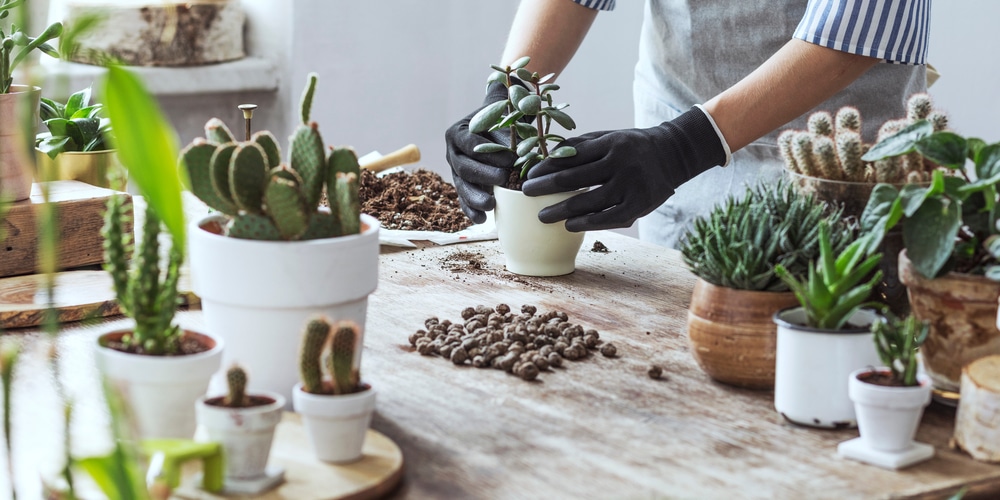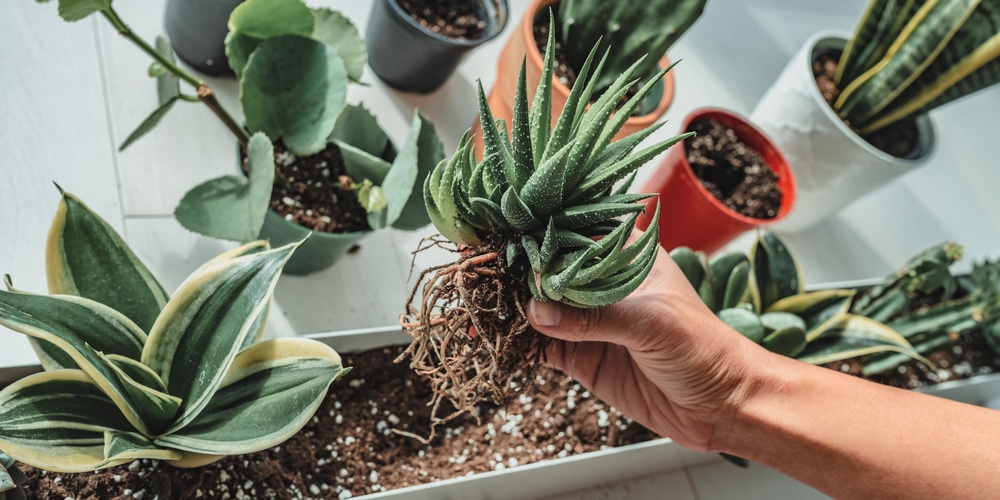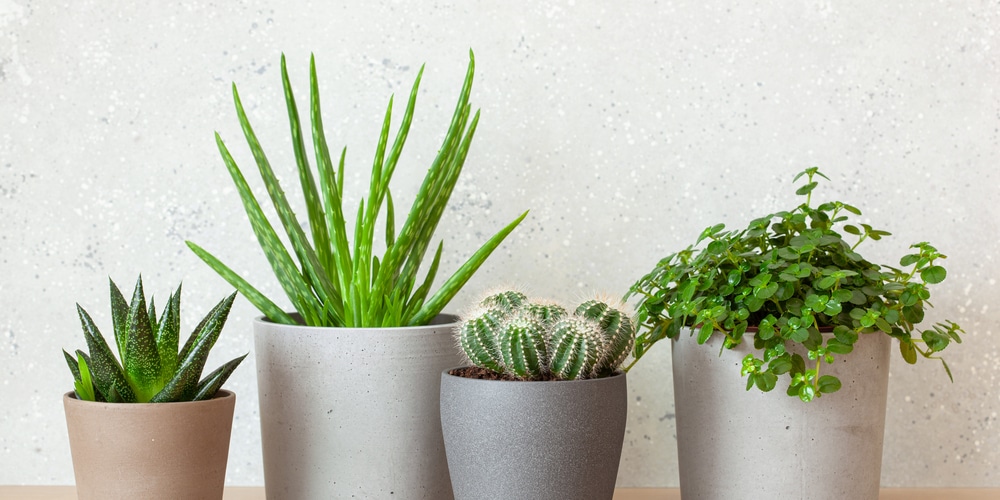Succulents are available in a variety of different types and are generally considered a resilient plant that can survive even in unfavorable conditions. Planting and growing succulents is relatively easy. These hardy plants can grow in challenging circumstances and will even survive in deserts or on gravelly shores. However, most succulents aren’t epiphytes, so you can not plant them in rocks or pebbles exclusively.
Succulents have extensive root systems that require a sufficient amount of soil to thrive. Like all plants, they require nutrients, moisture, air, and warmth, which are all provided by the earth. While you can plant succulents with rocks and pebbles, they are going to need a minimum amount of dirt. Let’s look at what type of soil is best for succulents.
Can You Plant Succulents in Rocks or Pebbles?
While succulents can grow in gravelly soil, rocks and pebbles won’t be able to support the plants’ growth alone. Succulents do need to have soil surrounding their roots to grow healthily. It’s best to provide your succulents with well-drained soil and only water occasionally.
Many gardeners add rocks and pebbles to their potting mix or to the bottom of the plant pot in order to aerate the soil and help keep it well-drained. This technique allows you to create the perfect conditions for succulents to grow. It also reduces the likelihood that your plants will develop root rot. Succulents and cacti like to grow in sandy soils that can drain quickly. They don’t require much watering, and overwatering can cause issues. The roots of succulents should never be left in wet soil.
Do succulents need soil?
Many people like to add rocks or pebbles to the tops of their houseplants to improve the look of the plant. Stone can help to create a beautiful and interesting display, but your succulent will need soil underneath the stones so that it can thrive.
Succulents can’t survive on rocks, gravel, or pebbles alone; they require soil to get their water and nutrients as they aren’t air plants. Even if you’re making a rock garden or a display that incorporates stones, your succulents will need enough soil to bury their roots. But at least an inch of soil at the base of your pot or layer the soil in between the rocks and stones.
How to care for succulents
Succulents are best grown indoors or can be planted outside if you live in a warm enough climate. With the correct care, succulents can thrive and grow very large in your yard. Only plant succulents outdoors if you live in Zones 10-11, where the temperature won’t go above 80°F or fall below 55°F. If the temperatures warm in the summer and cold in the winter, you may like to plant your succulents in pots and move them inside during the winter months. Here are some tips to help you care for your succulents:
Soil PH
Succulents grow well on a soil that has a reduced pH of about 5.5. Anywhere between 4 and 6.5 is a good PH for growing succulents. If you need to lower your soil’s PH, you can add sulfur or aluminum sulfate to your soil. Here’s how to test it.
Fertilizer
Succulents grow by taking moisture and nutrients from the soil. It’s a good idea to add some organic fertilizer to your potting mix when you plant succulents. This will help to support your plant’s growth. If your succulents are already planted, you can apply fertilizer to the topsoil. If your succulents aren’t getting enough nutrients, they’ll start to look pale, begin to wilt, and eventually die.
Top Up Soil
If your succulents are growing between rocks and stones, you’ll need to ensure that they have enough soil to grow in as they get bigger. You may need to top up the soil to help the arrangement thrive if the plants grow and the earth is no longer at the base of your plant’s roots.
Choose the Right Species
If you’re planning to create an arrangement where succulents are growing between rocks and stones, some species will do better than others. The cacti epiphyte can survive in minimal amounts of soil. This species can even grow on the barks and branches of trees.
Aloe is another type of succulent that doesn’t need much soil. There are over 250 varieties of aloe, and they are native to Africa. Aloe houseplants are available at one inch tall, and these can grow up to two feet in diameter if well cared for. These plants require very well-draining soil and will do well in pots that also have pebbles, sand, rocks, and stones.
Aloe can hold onto the moisture it’s given and can withstand severe drought. Succulents are a great houseplant as they can survive on little water and can be left alone when you go on vacation without any adverse effects.
Mist Your Succulents
Succulents can conserve moisture and require less water than other plants. There’s a myth that succulents don’t need much water; in fact, they should be watered regularly but only require a few drops of water at a time. Overwatering a succulent can cause it to become waterlogged, which will kill the plant.
Succulents need to be watered weekly. Most species of succulents can absorb moisture through their leaves as well as their roots. If you don’t have much soil in your pot, it may be best to mist your succulents using a spray bottle; otherwise, you could end up with a waterlogged pot. If a succulent loses leaves, they will grow back.
Conclusion
Rocks, stones, and pebbles are often used in succulent arrangements as they are attractive and innovative. Succulents need some soil to grow, and you should ensure that their roots are covered with soil. The plants will get their water and nutrients from the earth, so you should use a good quality potting compost and mix in some organic fertilizer. Succulents like soil that’s dry and do well in sandy soil.
Some people make terrariums or grow succulents in transparent pots with layers of rocks, gravel, and pebbles. This is very eye-catchy, but you’ll need some soil around the succulents’ roots. Succulents are a great plant for an office with no windows if you are here looking for something that will grow without much natural light.


